Brand value proposition possibilities: Giving customers a reason to believe
| September 2, 2020

“Why fit in when you were born to stand out?” – Dr. Seuss
Writing a decent brand value proposition requires research and analysis of the current market and direct competition.
Therefore, at least indirectly, it will make you more aware of how competitors behave and how to create separation between them and yourself.
As a result, you’ll be able to better relay to customers how your services will suit their needs better than any of your competitors. This contrast is a huge key to overall success.

Before I explain what a brand value proposition is, I first need to make sure you have a reasonable grasp on the concept of brand value.
What is brand value?
At the most fundamental level, brand value is a data-driven measurement of a company’s financial worth. Figuring out a brand value is done through market analysis. Essentially, it is how much a buyer would be willing to pay for the brand.
When we dig deeper, it’s clear that brand value is also a valuation of worth based on a brand’s relation to its direct competition. This impacts how much more customers will pay for a product or service from a specific company over another.
What is a brand value proposition?
A brand value proposition is a commitment made specifically to a target audience. This commitment includes a concrete reason or reasons why customers should use a company’s service. A brand value proposition gives detailed reasons why a product or service is right for a particular market.
It’s easier to understand when broken down into smaller parts:
- Problems solved
- Services offered
- Benefits offered
I will go further into detail about these later. For now, just note that a brand value proposition proposes the above features to customers.
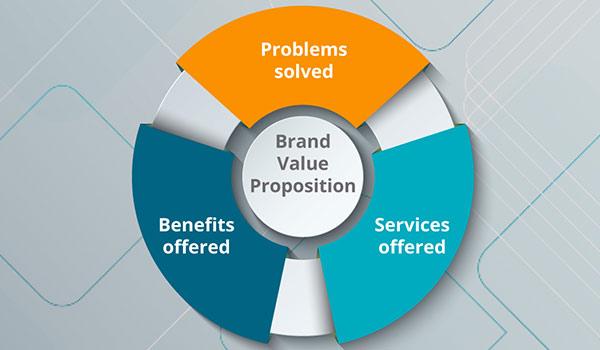
There are a lot of benefits that come with writing effective brand value propositions. 75% of B2B companies created some type of value proposition, so clearly they are important. Let’s take a look at some of the most helpful benefits.
Benefits of creating an effective brand value proposition
The better your value proposition, the stronger the benefits will be. Here are a few invaluable perks of getting the value proposition done correctly.
Boosts conversions and increases overall leads
If your value proposition is intriguing, it could be a large part of why a sale gets closed. It also may be your best chance at keeping customers engaged and interested, rather than turned off and on to the next site.

Similarly, a value proposition increases overall leads – both in value and abundance. By being upfront about what your brand offers, customers gauge your products and services alongside their needs and potential concerns.
This ushers them through any uncertainty and directs them toward a decision.
Centralizes attention and eliminates waste
A value proposition narrows your attention to the most important issues at hand, giving your teams a better chance at determining the right way to help specific audiences.

It centralizes focus toward customers and how you can help them, then specifies what it will take to be successful and meet your target audience’s needs.
A value proposition is a guiding force, keeping the right things at the forefront of campaigns, projects and activities.
Furthermore, this attention to detail helps eliminate waste. For example, if a project or campaign doesn’t fit within your value proposition model, it will be easier to recognize and dismiss.

A brand value proposition drains out any unnecessary tasks and refines your processes. This is a huge part of being successful, by sticking to the things your audience truly requires.
Spotlights the advantages you offer compared to the competition
It’s just not possible to create a groundbreaking value proposition without putting in some serious research of your competitors.
Part of the proposition writing process involves growing in your understanding of the direct competition. This in turn allows you to figure out ways to boost your brand differentiation.

Oftentimes, during the creation of your value proposition, it’s easy to become more in-tune with what your customers want and how to deliver it to them.
Outlines a clear path forward
Uncertainty and imprecision are enemies of any new project, campaign, service, company or product. Any missteps involving clarity are devastating, resulting in a group of potential customers who feel your services don’t suit them.
A brand value proposition cuts through ambiguity, carving a clear, focused path forward. It not only establishes a substantive need that your prepared solution can meet, but it also pinpoints which potential markets require these solutions.

With a clear path laid out in front of you, it becomes a lot easier to progress through each task without any uncertainty or doubt. This inspires teams and amplifies overall values and goals.
Helps brands relate to customers and understand their needs
A brand value proposition is a key tool to provide you with a foundation for which to connect with your customers and understand their needs.
It increases the level of engagement with customers, helping you gain valuable insight into how they value your services overall.

More importantly, this ensures that you’re connecting with prospects who feel you’re the answer to their problems, making them a likely candidate to make a purchase.
Ultimately, a value proposition cuts to the heart of what your target market truly wants, rather than beating around the bush with flimsy features. It allows you to base your entire solution on helping customers in the way they need most, which builds brand loyalty.
Clarifies marketing tasks and objectives
Marketing is a direct beneficiary of an effective value proposition, since the proposition creates guidelines to follow and focus on.
Armed with the knowledge given to them through this, marketers can better understand which type of customers to pursue and what types of needs they have.
They’re then able to use this specificity to create the most on-point campaigns that directly address the types of features they can offer to audiences.

On top of outlining marketing tasks, it also helps focus and align marketing messages to increase overall influence and effect.
It guides marketers through each potential branding task, giving them a foundation from which to build steady and focused messaging.
As you can see, there are enormous benefits to a value proposition done-right. Therefore, it’s important to create one that adheres to all the important guidelines.
How to write a value proposition that goes above and beyond
In order to write an effective value proposition, you first need to understand what types of things make up a good one.
Provide clear details as to why your brand is right for the audience. This is done in a brief, concise manner that is as descriptive as possible. It also offers a clear promise.
Here are some helpful hints to follow when writing your proposition:
- Keep it simple while delivering a clear picture of what your services will provide. It’s meant to be short, but that doesn’t mean unclear. Include the essentials.
- It’s not a mystery or a poem. Don’t get too tricky and confuse the customer. They should be able to understand it without ‘Googling’.
- You’re not convincing someone to buy a timeshare property or magic beanstalk. Leave the excessive advertising jargon, claims and over-promotion out of it.
Every proposition is different! Don’t feel that you need to follow some specific template or path to create yours.
However, do keep in mind that there are general guidelines to follow. Here is a basic rundown of what your proposition should entail:
- Main header
- Subheader
- Supporting images
The header is the most important part of the equation. Put serious time into the wording to get it right. It should be snappy while giving the benefit customers will receive from using your service.

The subheader then fills in the details further, adding on to the header. It clarifies who could benefit from the service you offer and why your service or product is effective.
The supporting image(s) provide a bit of evidence for the header and subheaders. Make sure it signifies your main ideas, or shows the product or service in action.
Now that you have the basic outline and some rules to follow, let’s give you some key ways to write an awesome value proposition.
Tips to writing the best value proposition possible
1. Research your competition and differentiate from them
“The weakness of an enemy forms part of your own strength.” – Anonymous
It will be pretty tough to highlight a potential difference between you and a competitor if you don’t understand what kind of offerings the competition has.
Therefore, make sure to be thorough in analyzing and researching your direct competition, particularly when it comes to their value proposition.
Once you’ve got a clear point of reference, look for ways to pivot off of it and offer something new or different. This really shouldn’t be that hard, considering you have a complete breakdown of the competition’s offering.

Remember also that you’re trying to break free from a few different brands. Trying to be 100% different from 100% of the competition is impossible and a mistake.
Put yourself into the potential buyer’s shoes during this process. If you were considering a new product or service, wouldn’t you visit quite a few different homepages during your search?
The answer to that is most likely ‘yes’, so keep that in mind when creating your proposition – the customer will see other webpages and will pick whichever stands out and helps them most.
Finally, make sure your pivot from the competition isn’t a change-of-direction for the sake of ‘being different’. Keep your creative shifts helpful to the customer first and foremost.
2. Understand your audience and use the best voice for them
“The best marketing strategy ever: CARE.” – Gary Vaynerchuk
The best value propositions truly connect with their target audience because they’re written in a voice that resonates with them.
Before this is possible, you’ll need to deeply understand your audience. This goes beyond researching some data and discovering demographics.
You need a comprehensive profile that gives you real insight about the customers. This should include what type of person they are, how to best speak to them and what kind of stuff is important to them.

Now consider how well your value proposition will connect with this audience. Sometimes, this part of the process is almost common sense. For example, if you’re coming out with a new vacuum cleaner, chances are you don’t want a value proposition that speaks to a youthful, tech-driven audience.
On the other hand, if you’re developing an AI robot vacuum, maybe the best proposition voice is best aimed at a youthful, tech-driven group.
3. Create a rundown of the different benefits you can offer
Before we can make the language and vocabulary of our proposition fit together, it’s important that all the potential benefits we can offer are accounted for.
The best way to do this is by making a list, and if necessary, inputting them into something that illustrates them clearly.
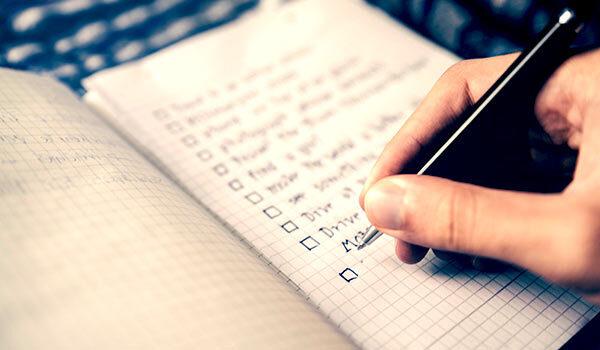
Divide the benefits into subsections that better define them. For example, if one of the benefits is ‘fun’, put it under the human benefits. If one of the benefits is ‘organizes’, place it in the practical pile.
Chances are you won’t include every benefit into the proposition, but this method ensures you don’t forget an important one.
4. Create a value proposition canvas
A value proposition canvas is one of the most effective tools to guide your proposition-writing process. It’s so valuable because it helps you visualize customer needs and the different ways you can meet these needs.
So, what is a value proposition canvas? It is a visual graph that is split between potential customer issues and how a brand might address these. Below is an example canvas. The setup can change but yours should generally look like mine.

I’ll break down each section of the canvas to give you a better idea of how it works.
Customer profile
- Gains – This includes things that would make a customer’s job easier and more efficient.
- Pains – This includes things that prevent a customer from completing their task.
- Jobs – This is the job the customer is trying to get done.
Value proposition
- Gains Creators – How you can help the customer achieve gains.
- Product/Service – The products you offer that will help the customer.
- Pain Managers – Ways you can help overcome customer pains.
It’s up to you to start adding things to your own canvas. As you do, it will become a lot clearer what types of things to target when writing a brand value proposition.
5. Optimize your layout
“Almost all quality improvement comes via simplification of design, manufacturing… layout, processes, and procedures.” – Tom Peters
The most minor of differences completely change the way someone feels about your value proposition. That’s not to say the layout is more important than the message, but it does hold serious weight.
The good thing is, it’s common sense to understand what looks ‘good’ or not. For example, if you saw a giant paragraph on the page with no lines separating any of it, you’d be turned off.
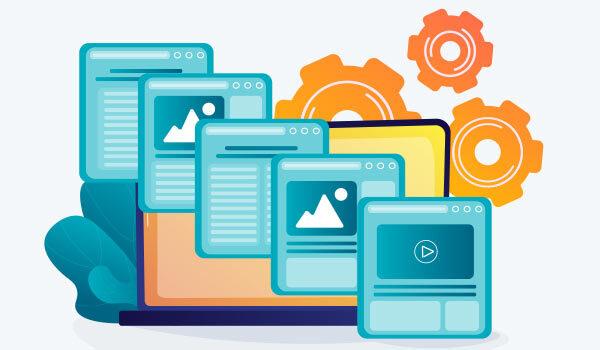
Take that same paragraph, however, and break it up using multiple paragraphs or bullet points and you’ll have a much easier time reading it.
Follow these principles with your value proposition as well. Now, don’t confuse the above concept with the idea that less is always more – that’s not the point. Instead, the idea is that appearance and structure is the key.
Everyone will have their own preferences, and that’s fine as long as they stay within some reasonable guidelines:
- Keep the text from getting too lengthy, but make sure you give enough information about the value your service delivers.
- Bullet points or other short, informative sentences are easy to absorb.
- Include as much as you can about the product or service so the reader has very few questions after reading the proposition.
Consider the positioning of your value proposition and how it syncs with the rest of the homepage. Determine whether the layout will detract or add to the potential power of the proposition.
Bonus – ad lib your way to a powerful brand value proposition
Similar to the value proposition canvas, this is a fast way to come up with effective ideas. Ad libs are a way to see how different thoughts sound in an overall greater grouping.
Here’s an example of an ad lib template for a value proposition. Feel free to create your own, or if you want, use one of the many available ones online. I used Strategyzer’s template, as I feel it was the best version.
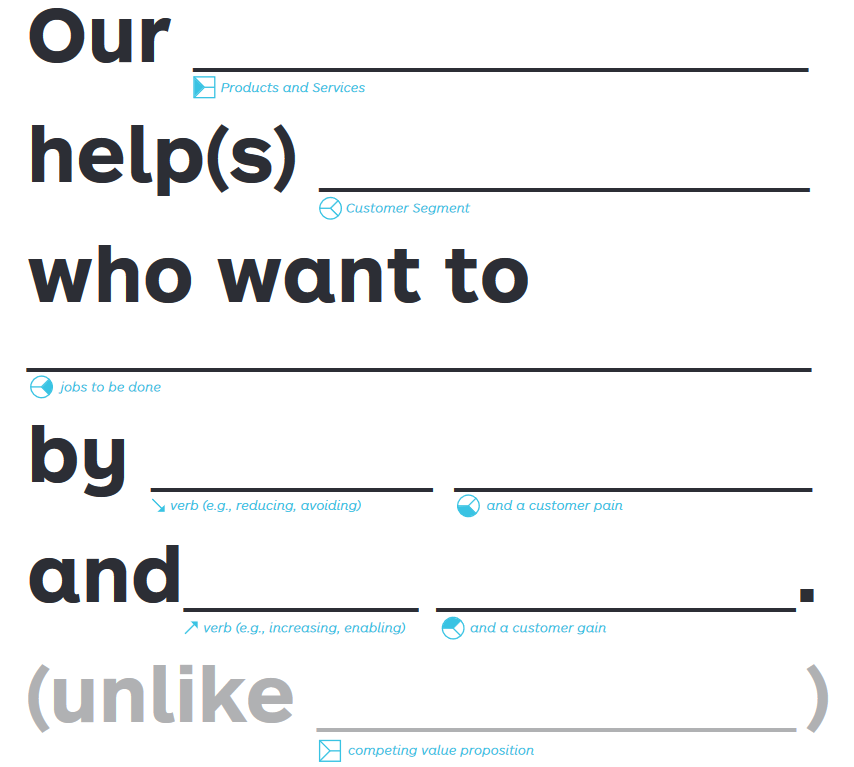
This template, available here, gives you a good example of how helpful the ad lib method could be. Simply fill in the relevant details and see what it ends up giving you. I recommend filling out a few different ones to have some differentiation.
Now that you have the foundational details to create a brand value proposition, let’s look at some examples.
Examples to help inspire your writing
I’ve selected three example propositions that creatively capture the importance of this practice. Use these cases to find your own creative spark.
1. unbounce

Service: Expert webpage-building.
For who?: Tech-limited companies.
Pain manager: No coding knowledge necessary.
The above photos are all three from the unbounce homepage. Notice what they did? They created a three-pronged header for their proposition.
The text reads ‘Convert More’ and then switches between ‘Customers’, ‘Sales’ and ‘Leads’, while changing the image but keeping the subheader and call-to-action the same.
This stood out to me, and I liked how they explained their features in detail.
2. Spotify
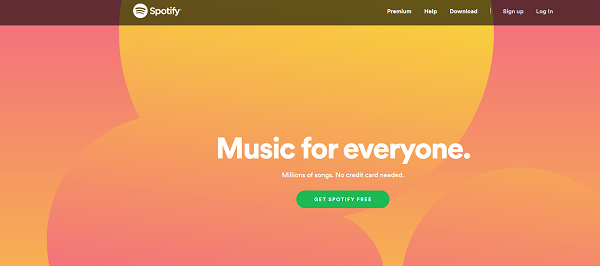
Service: Digital music.
For who?: Everyone.
Pain manager: No credit card required.
What stands out to me about Spotify’s proposition is mostly the layout. The value proposition is in complete contrast with the other visual elements. Even though the text is short, it’s catchy, informative and says what it needs to.
3. Fundly

Service: Digital funding.
For who?: Individuals and nonprofits.
Pain manager: No raising requirements or startup fees.
The reason I like Fundly’s proposition is their message ties in nicely with the background image (two different sides of the road).
Also, they present some key benefits that help them differentiate from other funding platforms, such as no raise requirements.
With these examples to guide you, there’s no reason why you can’t create a special message.
Begin writing your own!
You now have the tools to create something truly inspiring. Remember, if you create a value proposition that clearly outlines why customers should buy your service, the chances of making a sale go way up.
Use the above examples and strategies to boost your brand and show why the competition doesn’t even come close!
Check out our complete branding guide to learn more.
